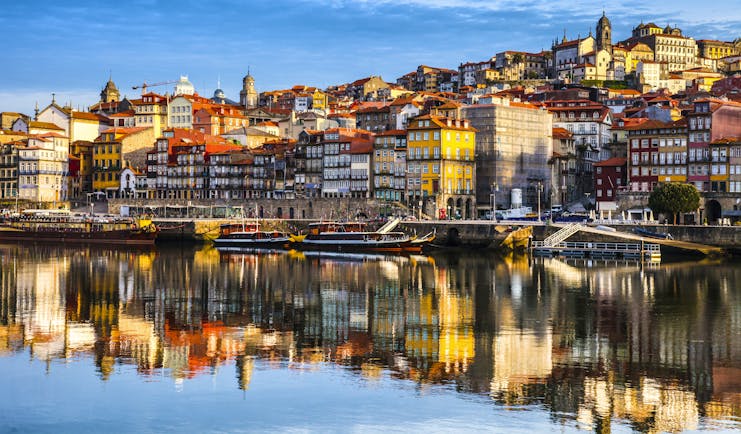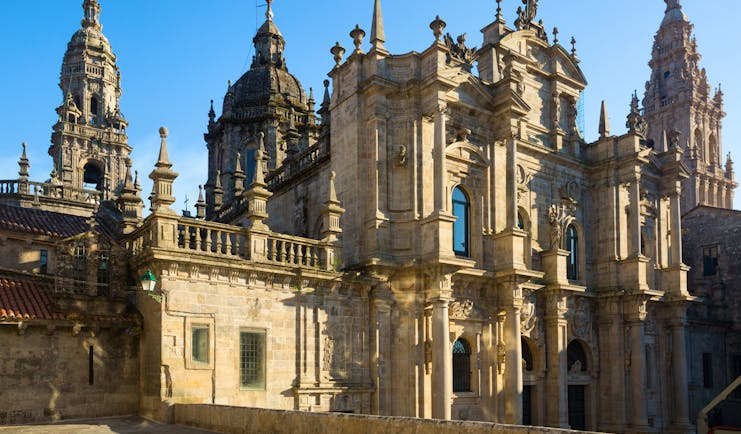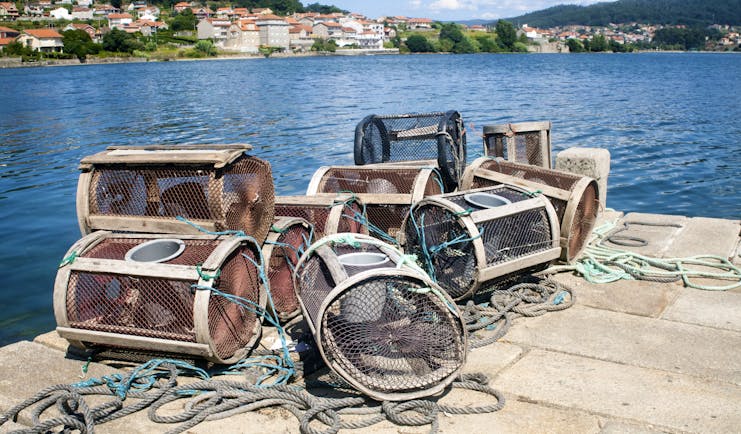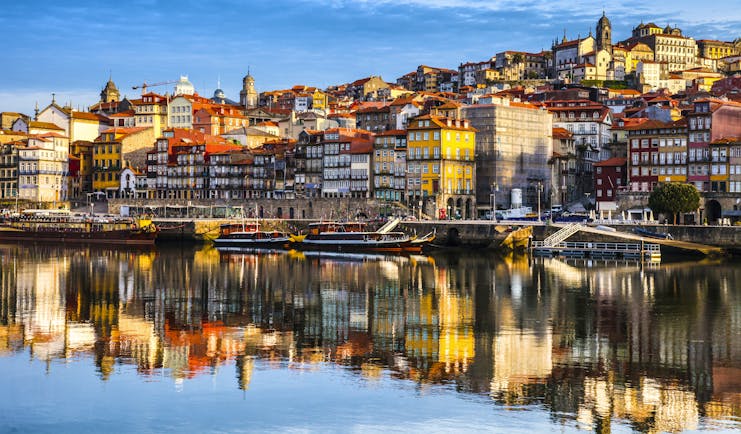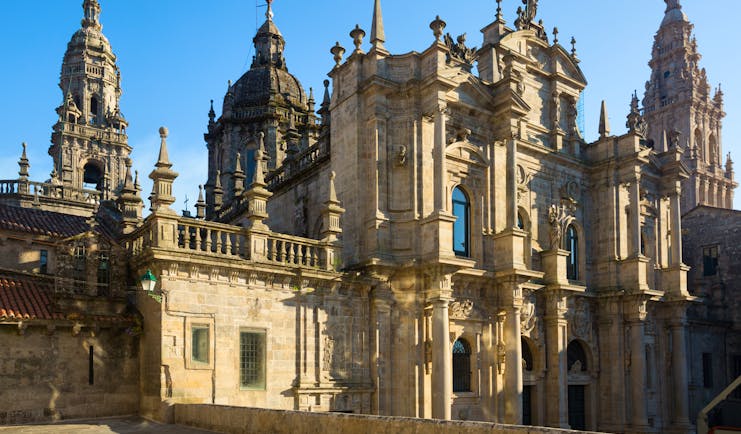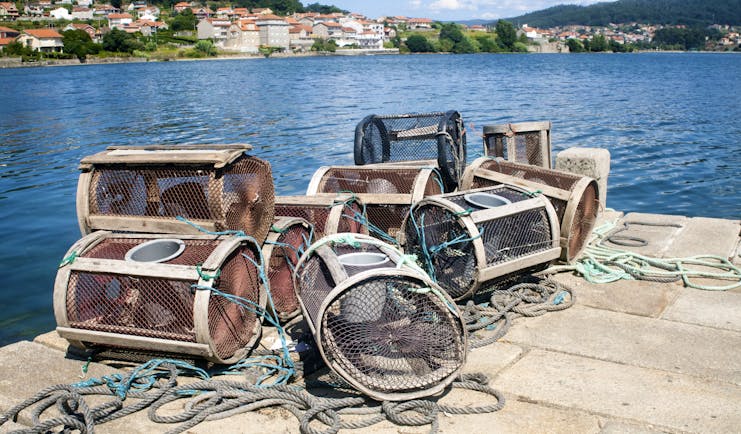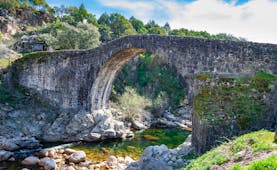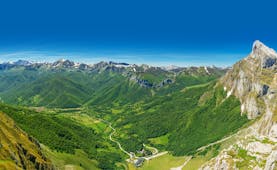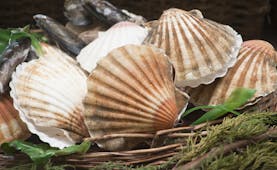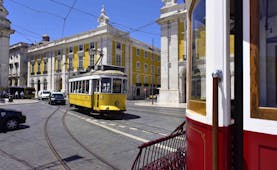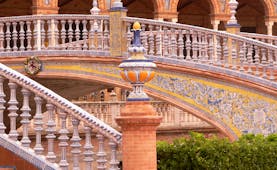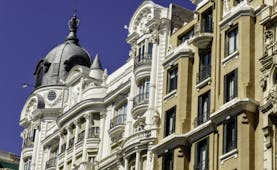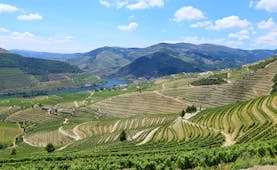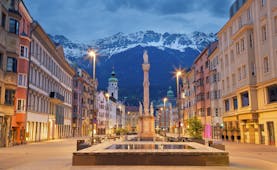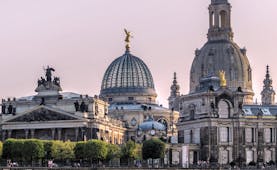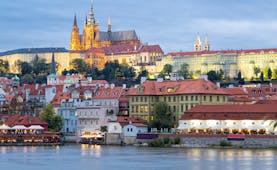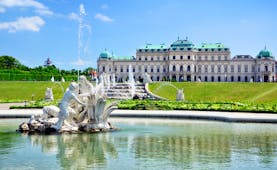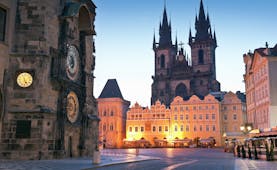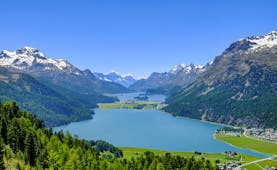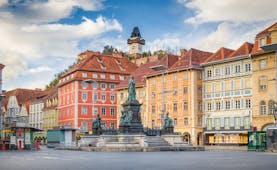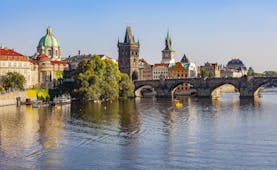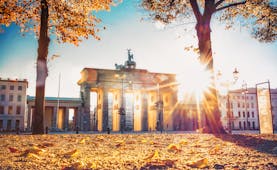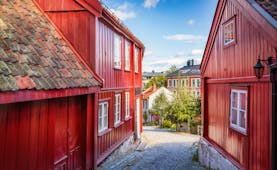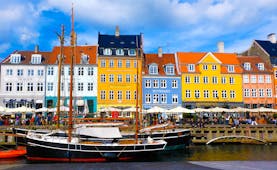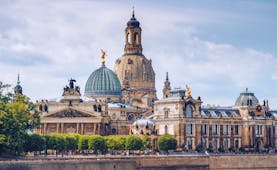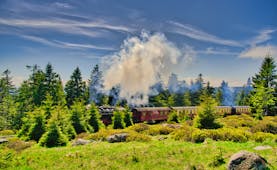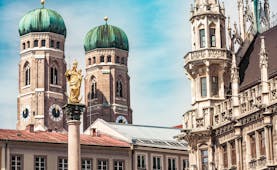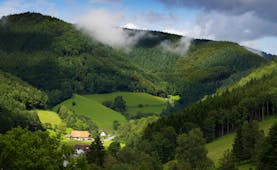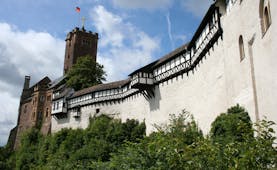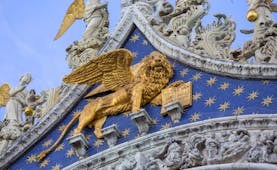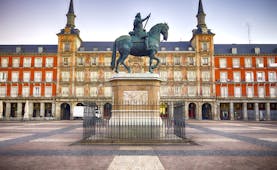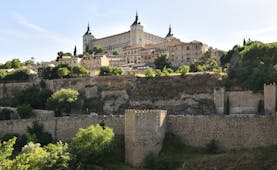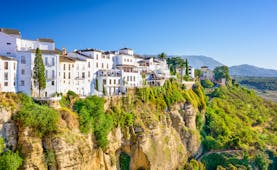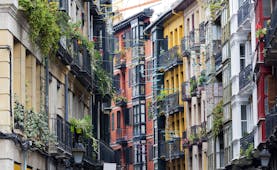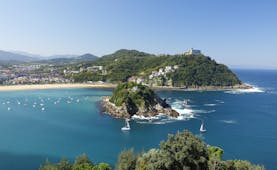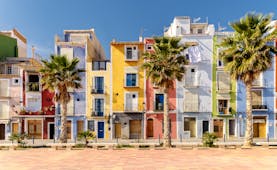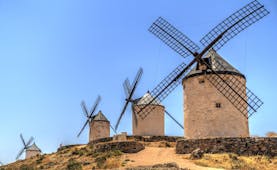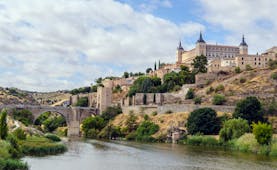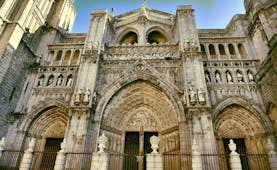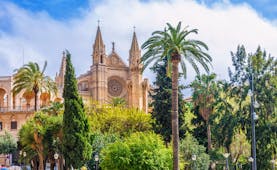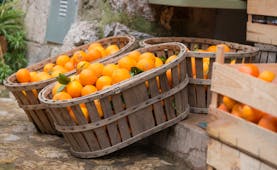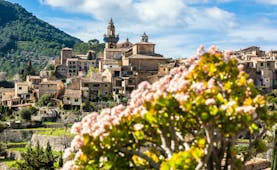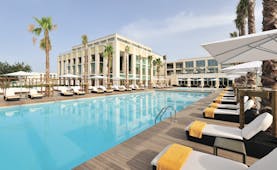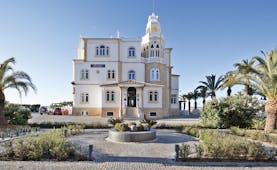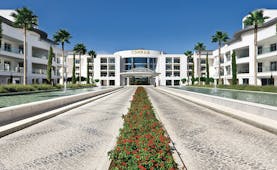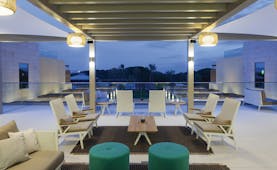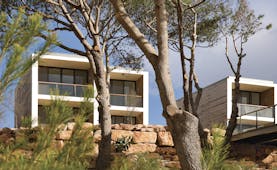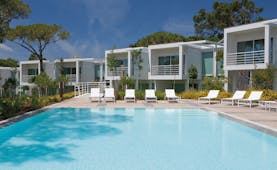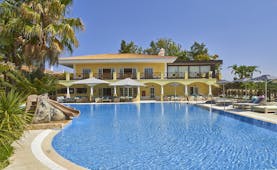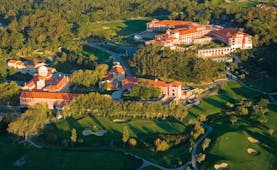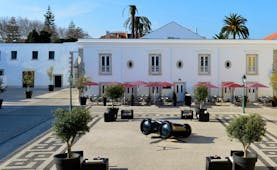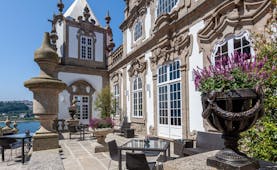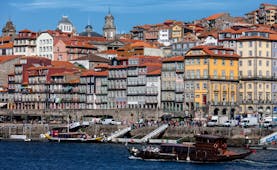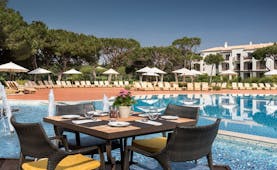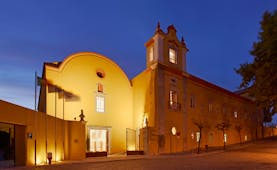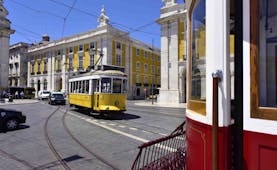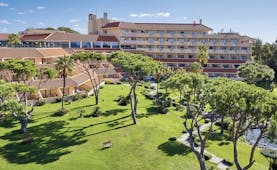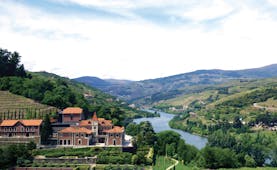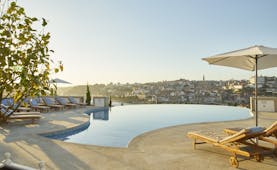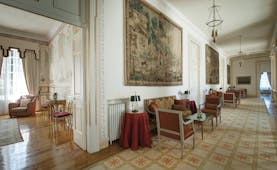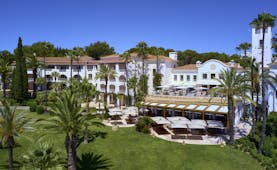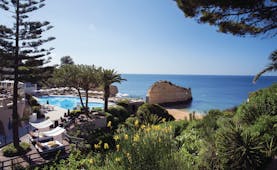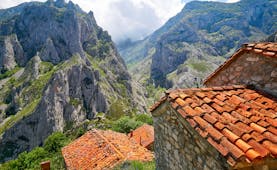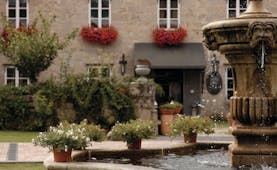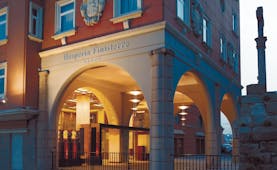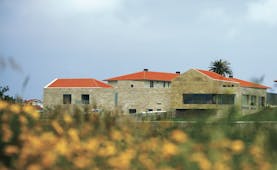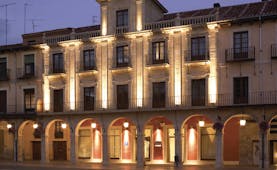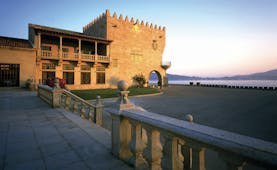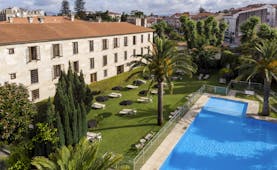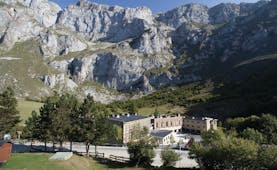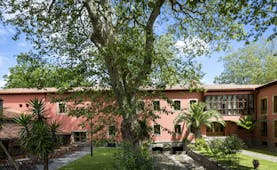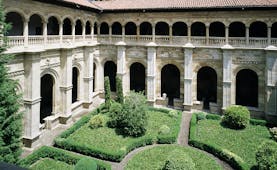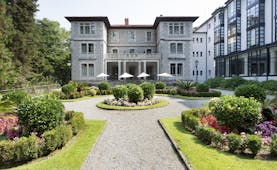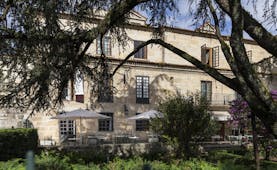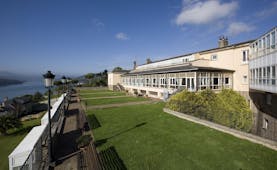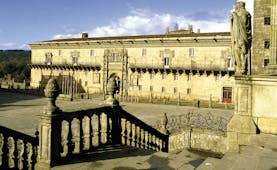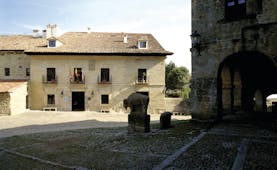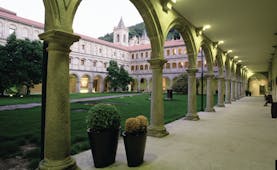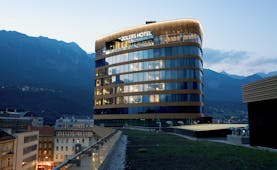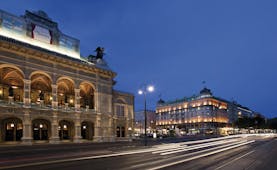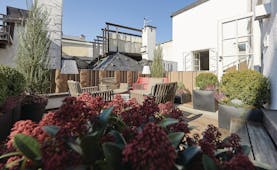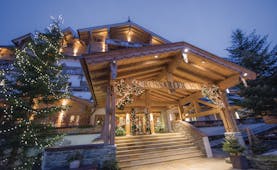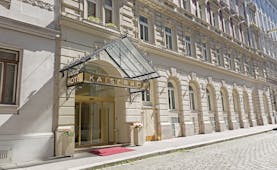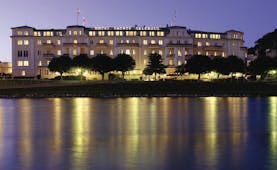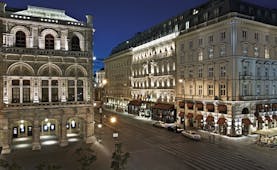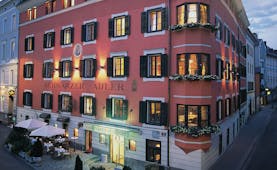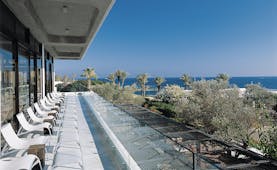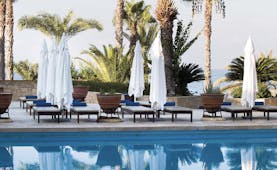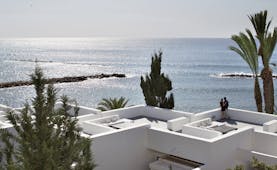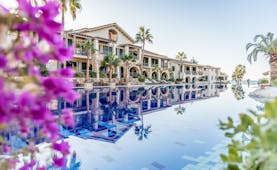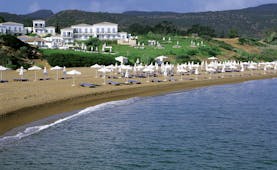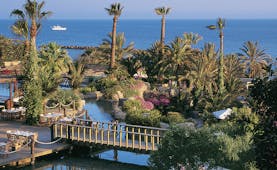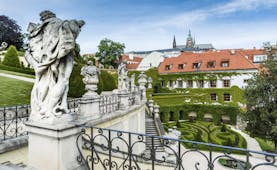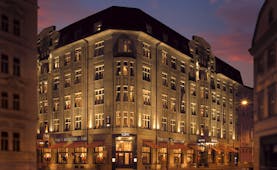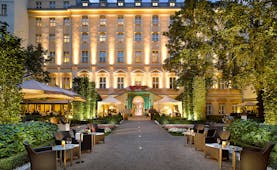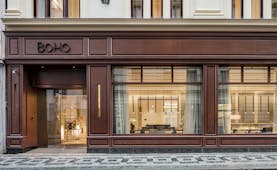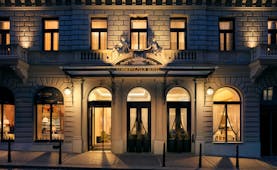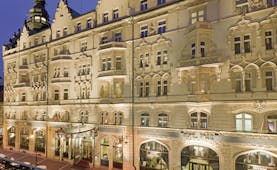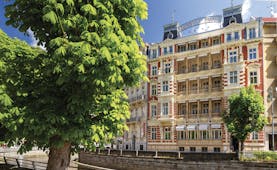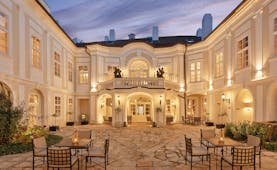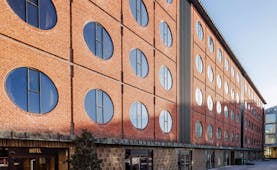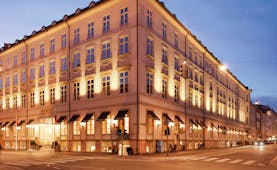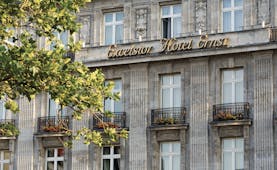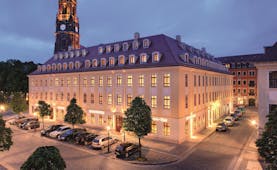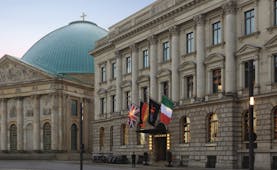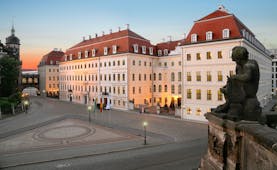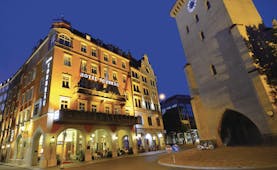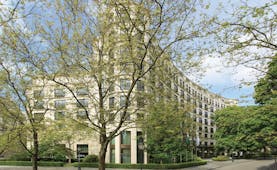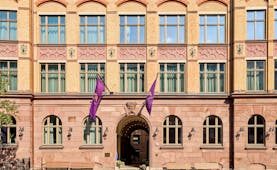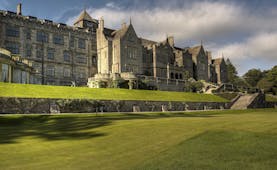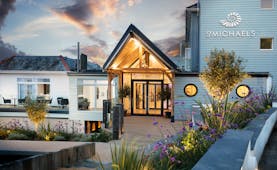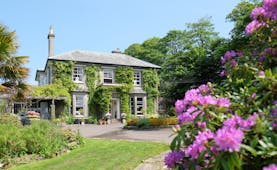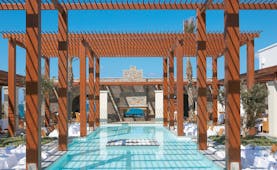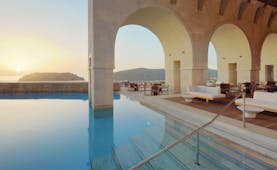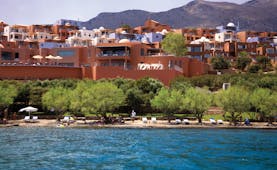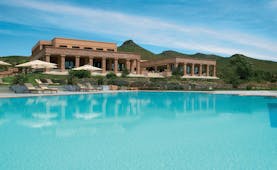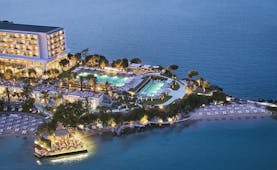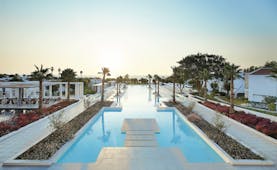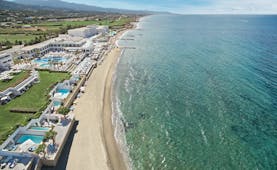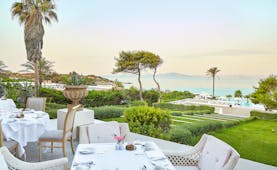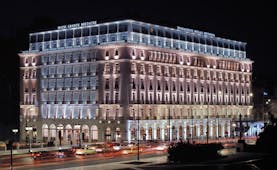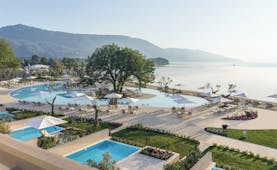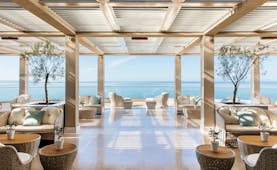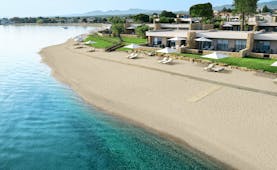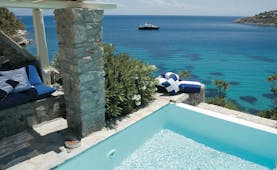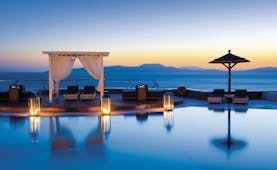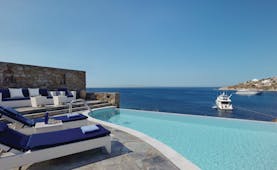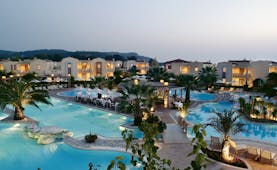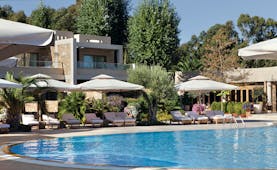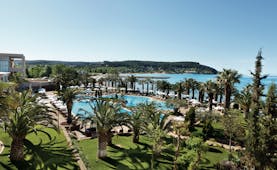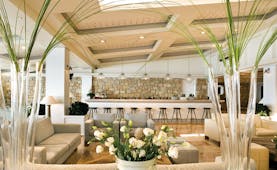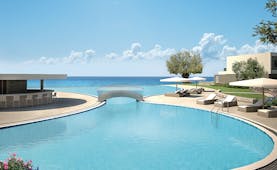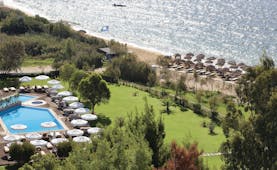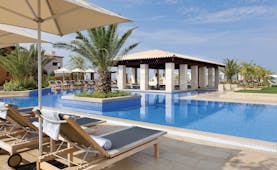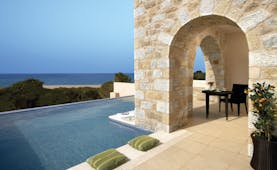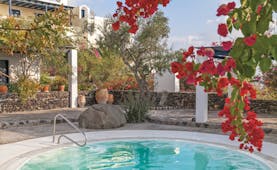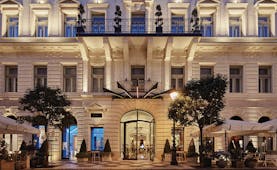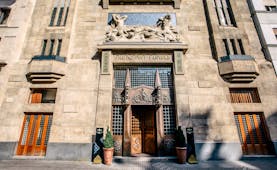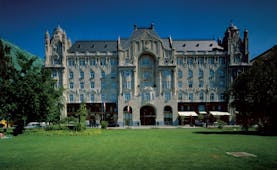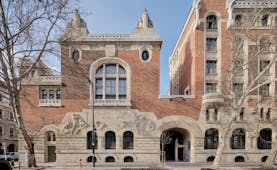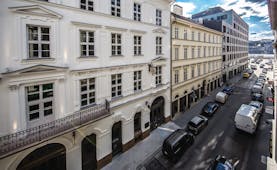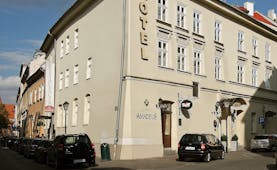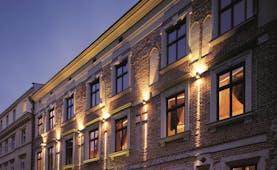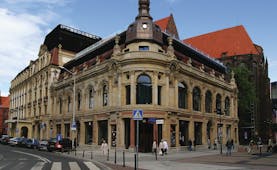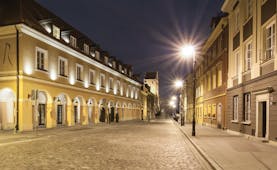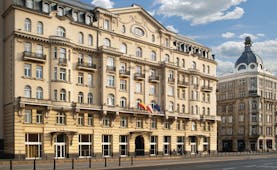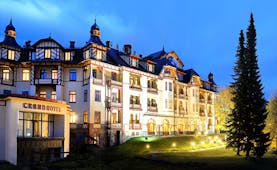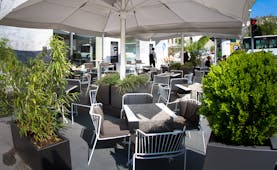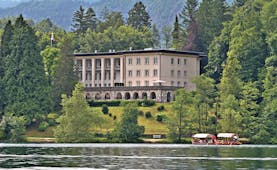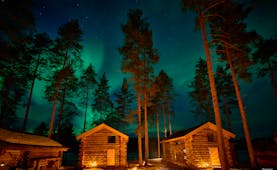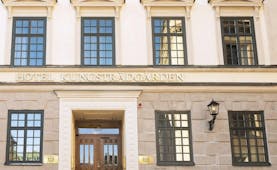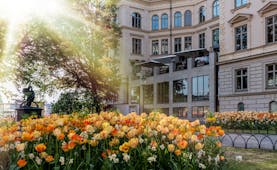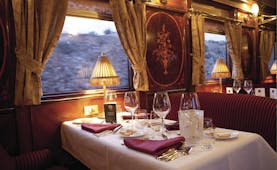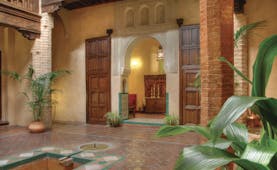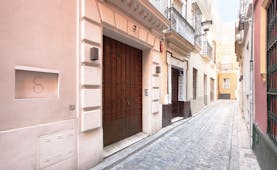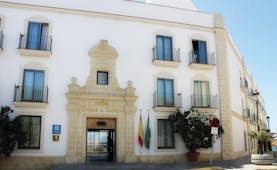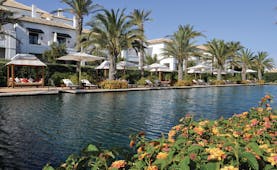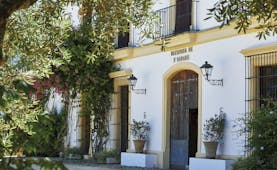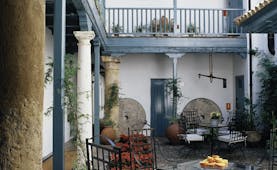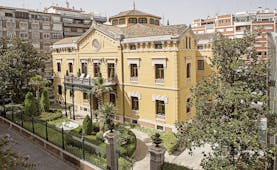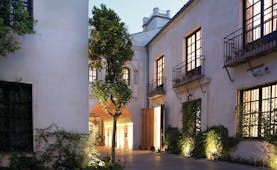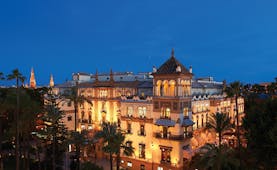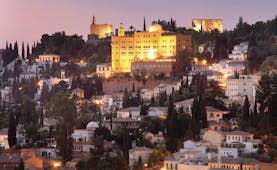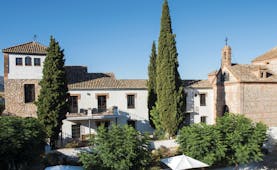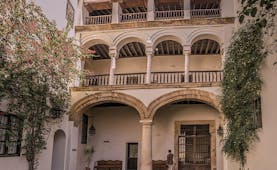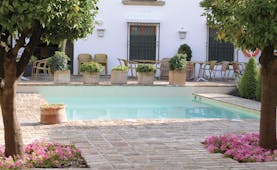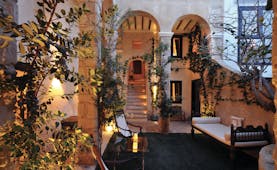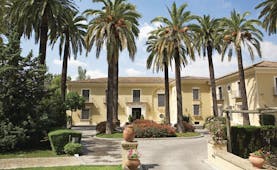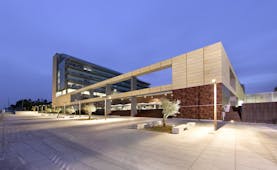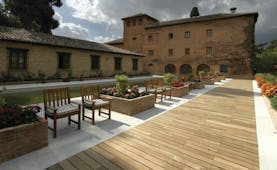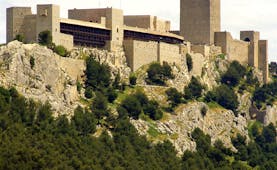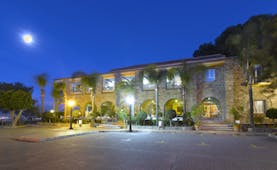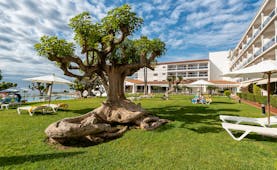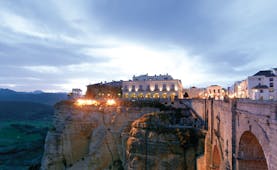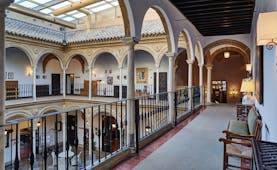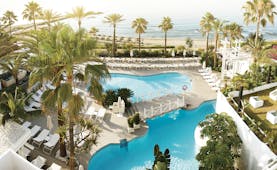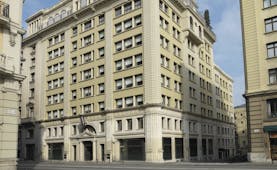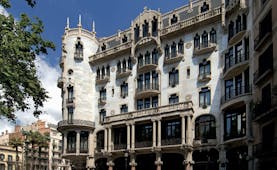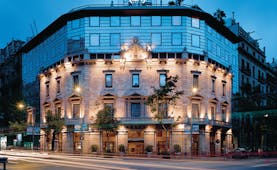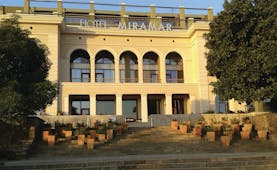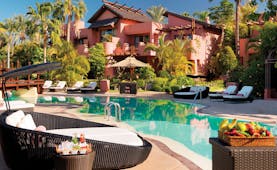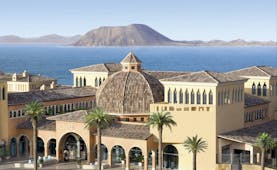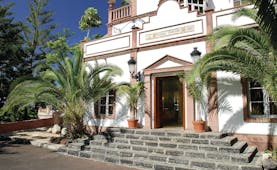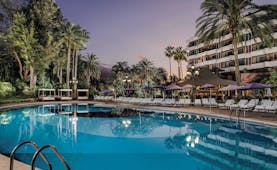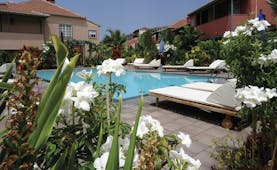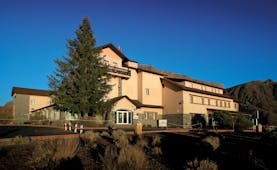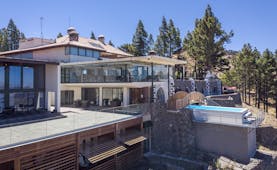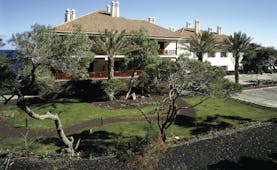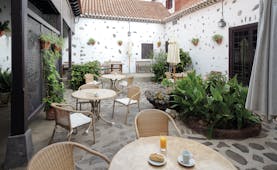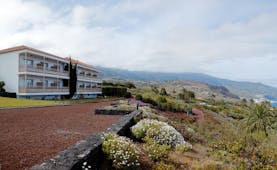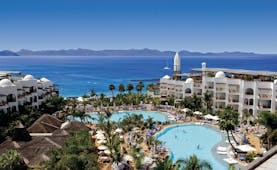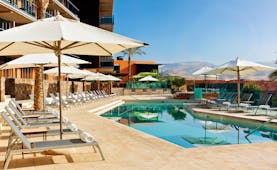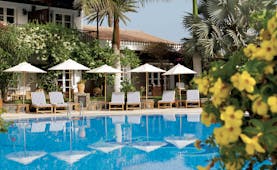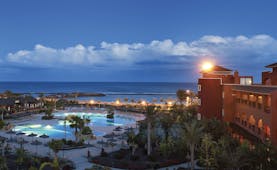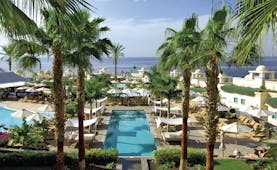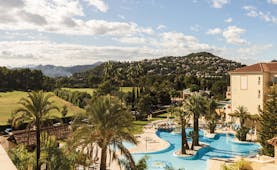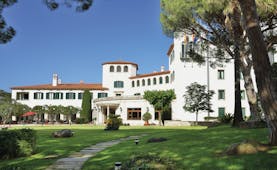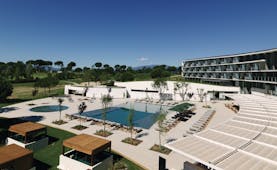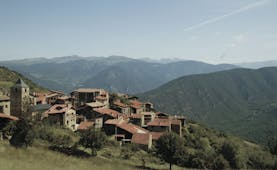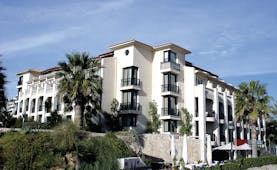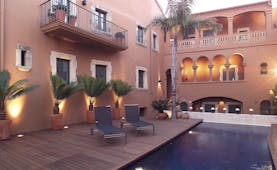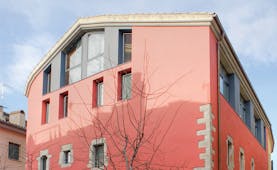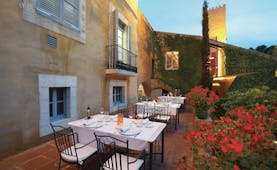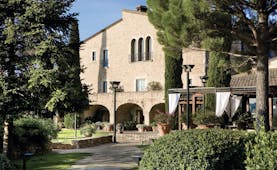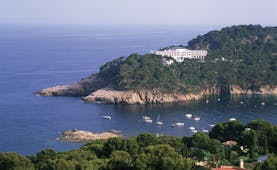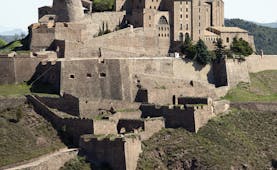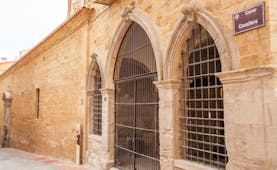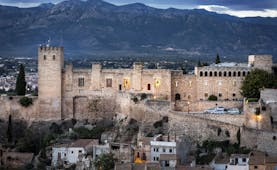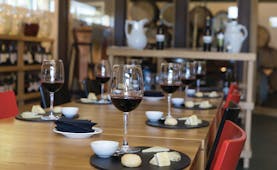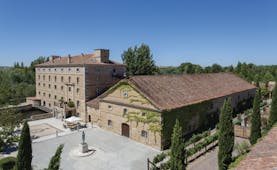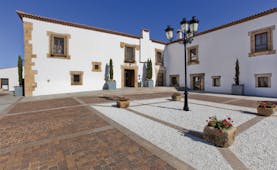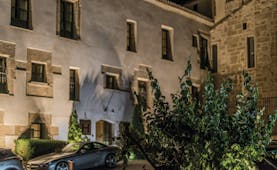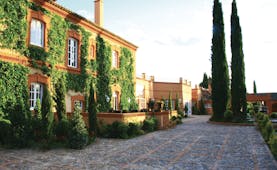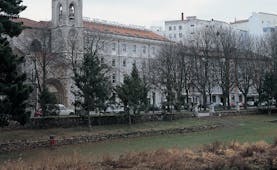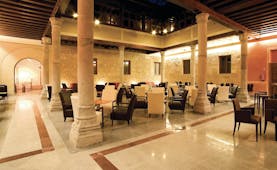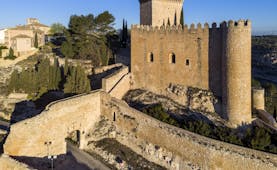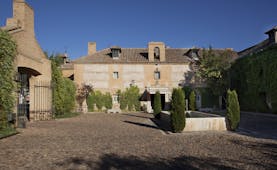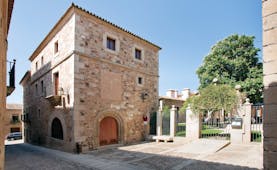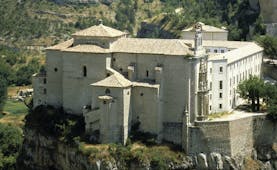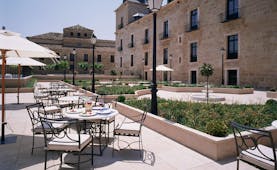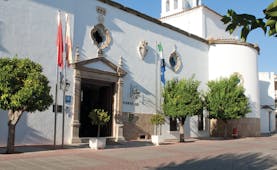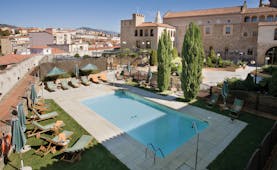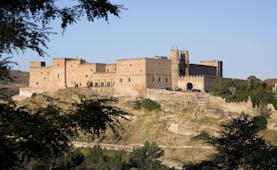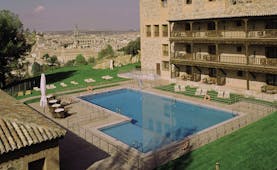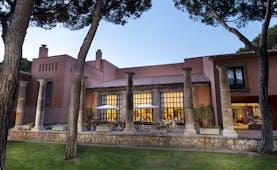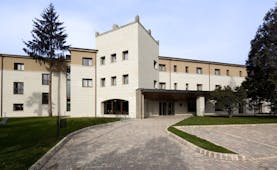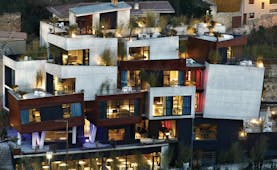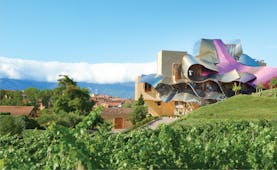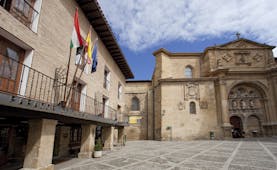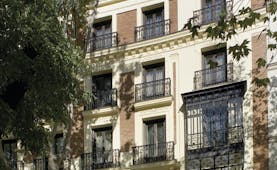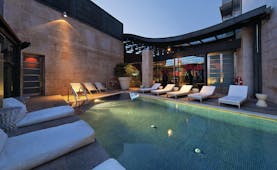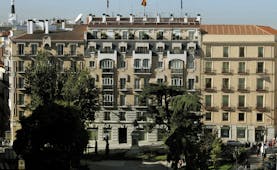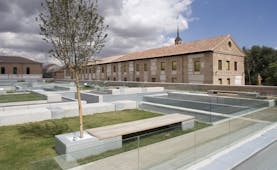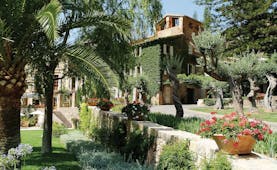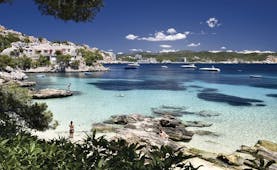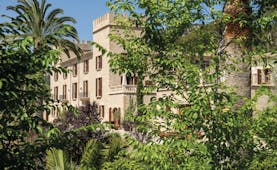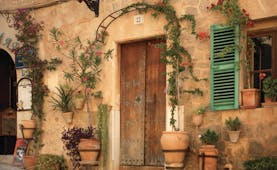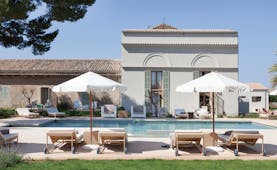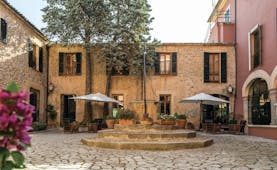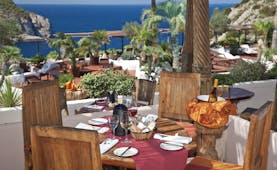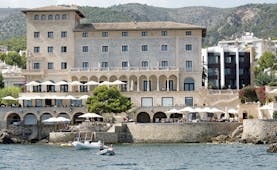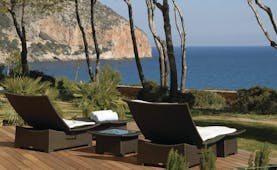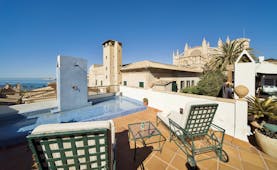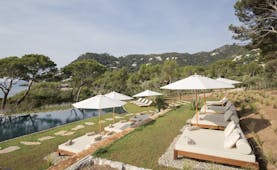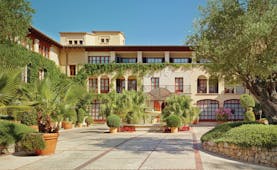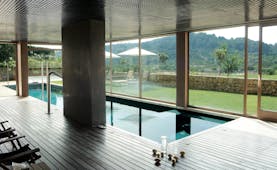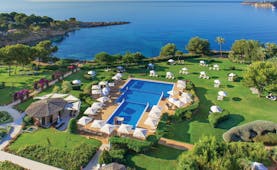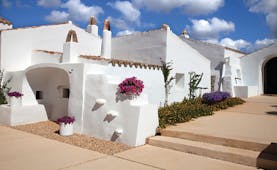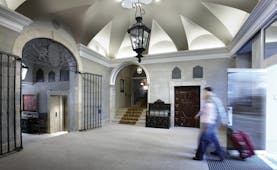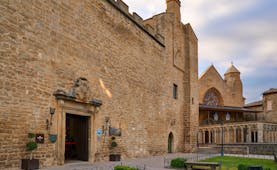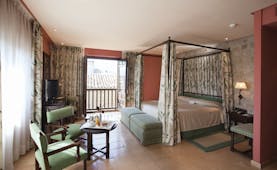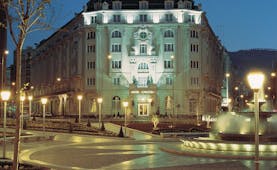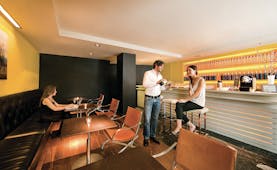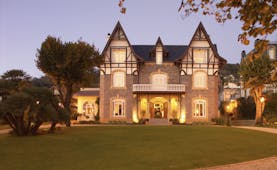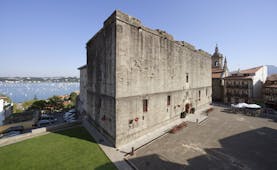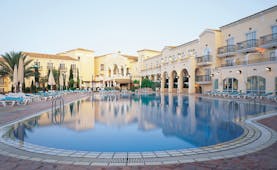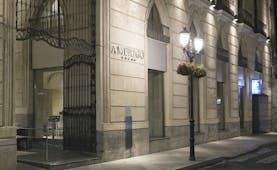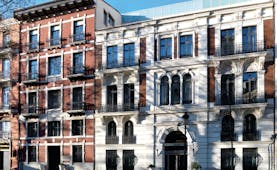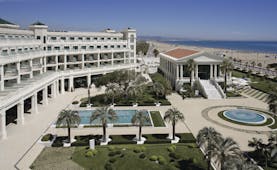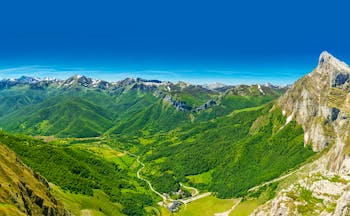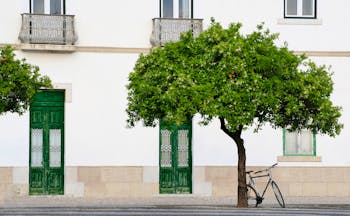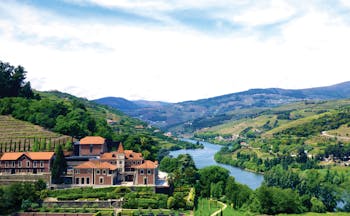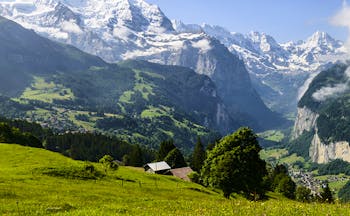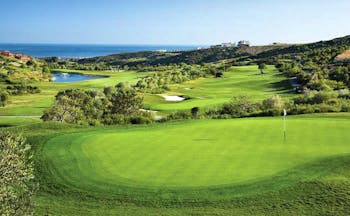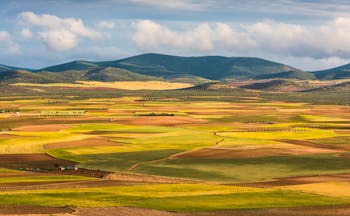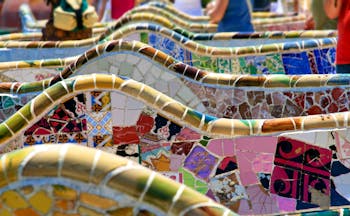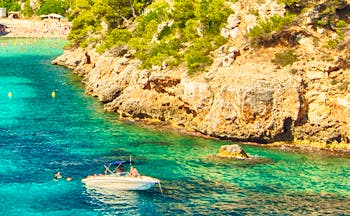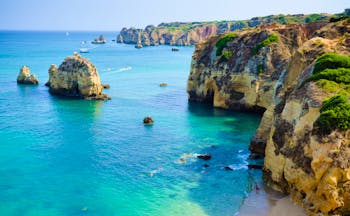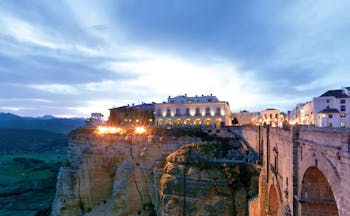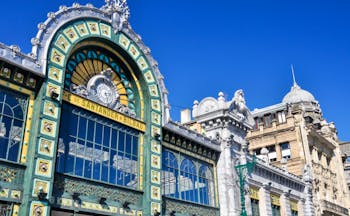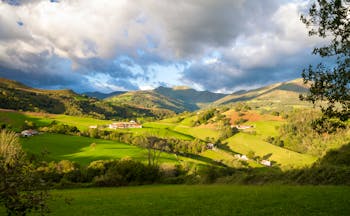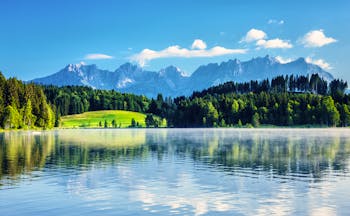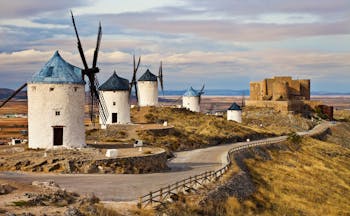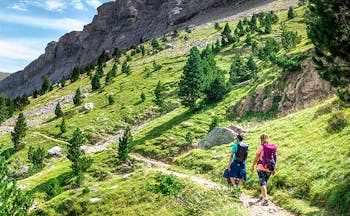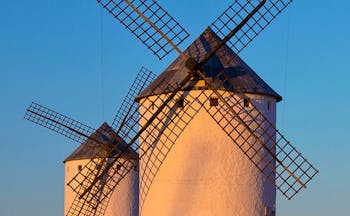Luxury touring holiday by train from Galicia to Lisbon including Santiago de Compostela, Porto and Coimbra
This itinerary begins in Santiago de Compostela, the capital of Galicia. Take time to explore the compact old quarter with its medieval walls and winding streets. The focal point of the city is the 11th century Romanesque Cathedral, the endpoint of numerous pilgrimage journeys and the final resting place of St James the Apostle. Another highlight is the Mercado de Abastos, a traditional Spanish food market. After two nights here, the next stop on the holiday is the quaint city of Pontevedra, split in two by the Lérez River. You will be staying on the south side of the river, where you can find the charming medieval old town with small squares, cafés and bars. After one night in Pontevedra, you will continue into Portugal, your next stop being Porto. Porto enjoys a medieval historic centre and has a lot to offer visitors. Stroll along the banks of the River Duoro, taking in the six bridges that cross the river. You will find many cellars that offer Port tastings and tours dotted alongside the river. Your next destination is Coimbra, a city famed for being home to the oldest university in Portugal. This UNESCO World Heritage Site is well-worth discovering. You end this touring holiday in Portugal’s lively capital, Lisbon. Lisbon sprawls across seven low hills beside the River Tagus. Wander the maze of narrow streets in the historic Alfama district and visit Belém to savour a traditional Pastel de Nata. Places of interest further afield include the coastal resort of Cascais and the charming town of Sintra in the foothills of the Sintra Mountains. Both places can be reached by train from Lisbon.
Highlights
Santiago de Compostela • Mercado de Abastos • Pontevedra • Galicia • Porto • Port tasting • Coimbra • Lisbon • Alfama • Belém • Cascais • Sintra
Day by day
Your touring holiday from Galicia to Lisbon begins in Santiago de Compostela. We do not include flights in this itinerary although flights with some regional airlines are available. Alternatively, you could opt to begin the itinerary with a couple of nights in Madrid before travelling to Santiago de Compostela by rail. Your hotel for the first two nights of this tour is the Parador de Santiago de Compostela, a historic monument in its own right, situated opposite the pilgrimage site of the city’s famous Cathedral.
You will have plenty of time to visit the religious highlights, explore the compact old quarter within its mediaeval walls, and sample Galicia’s marvellous cuisine. The Romanesque cathedral was begun in the 11th century, but not completed until the 13th, with a wealth of decorative and iconographic exterior detail added in the early 18th century in the Baroque style. The Plateresque cloister is one of the most important in Spain, with annex rooms which include the library, Chapter Room, and the Chapel of Relics, which houses a series of wonderfully ornate golden pieces. The Ceremonial room has a grandiose arched ceiling and corbels that depict a royal banquet. The second most popular sight in Santiago de Compostela is the Mercado de Abastos, a very traditional Spanish food market. If possible, see this market on a Thursday or Saturday, as this is when the most local producers set up shop. However, on any day, this is an excellent place to pick up some of the local cheeses, crafts, flowers, and wines. Enjoy the outstanding natural landscape in the green parks and gardens that punctuate the city such as Alameda Park and San Domingos de Bonaval Park. In the evenings, dine on the regional specialities with sensational views of the cathedral’s breath-taking front façade: small crabs, barnacles, angler fish stew, Galician pork, beef, and the regional wines, Monterrei, Ribeiro, Rías Baixas and Valdeorras.
Today you take a 35-minute train journey to Pontevedra where you spend one night. Your hotel, the Parador de Pontevedra is situated in the well-preserved, mostly pedestrianised old quarter of Pontevedra. Spend the afternoon exploring the historic treasures of the city such as Santa Maria la Mayor Basilica which boasts gothic architecture and La Virgen Peregrina Church whose beauty is handsomely illuminated at night. The city also offers the Pontevedra museum which is spread across five different areas.
Today continue your journey south with a change of trains in Vigo and then across the border into Portugal as you travel by rail to Porto, the second-largest city in Portugal situated on the banks of the River Duoro and known for its production of port wine. You stay in Porto for two nights affording plenty of time to get to know this charming city.
Porto is a unique and impressive city, at the mouth of River Duoro offering golden beaches and an important port. The city is best explored on foot. Begin in the ancient Ribeira district, a labyrinth of cobbled streets and medieval buildings. Lavish churches and monuments are visible on every corner, alongside striking modern architecture, Baroque and Romanesque masterpieces, and quaint independent cafes and bars that have a loyal local following. Places to visit include the Church of São Francisco, situated in the city’s Old Town, which is a registered UNESCO World Heritage Site in its own right. The Church of São Francisco combines a Gothic exterior with an elaborate Baroque interior. It is the most notable example of Gothic architecture in the city. It is possible to take a guided visit of Palácio da Bolsa, where you will see the cloister, the palace’s main chambers and the Arabic ballroom that was inspired by the Alhambra Palace in Granada. Climb the 200 steps to the top of the Clérigos Tower to take in the panoramic views of over the city. To see a more modern side to the city, Santa Caterina is Porto’s busiest street, where you can find Art Nouveau cafés nestled amongst converted historic buildings. Finally, many Port cellars line the southern banks of the River Duoro in Vila Nova de Gaia and a tour and tasting is a must whilst in the city.
Travel by rail from Porto to Coimbra today. The journey by train takes only about 1 hour 25 minutes giving you the afternoon to explore the city. Coimbra, situated on the banks of the River Mondego, is home to the oldest university in Portugal, a UNESCO World Heritage Site, built in the 13th century. Climb the 180 steps in the tower to take in spectacular views of the city. The university’s chapel, Chapel of São Miguel, abounds with history and is from the 16th century. The Monastery of Santa Cruz dates from the 12th century and is home to the tomb of the first King of Portugal. The Old Cathedral displays Romanesque character whereas the New Cathedral has Baroque design.
It will take just under two hours to reach Lisbon from Coimbra by rail today and then you have two days to explore the capital at your leisure. Your base is the Pousada de Lisboa situated in Praça do Comércio, one of Lisbon’s most emblematic squares.
Portugal’s vibrant capital situated beside the River Tagus has a lot to offer. Firstly, visit the Alfama district, Lisbon’s Moorish quarter, home to narrow alleys and cobbled streets. Here you can find Castelo de São Jorge, reached by a steep climb. The castle dates back to the 5th century and is worth visiting to take in the views of the city and the river. Explore Belém and be sure to sample a famous Pastel de Nata (traditional Portuguese egg tart) from the café where they were first created; Pastéis de Bélem. Visit the Torre de Belém, a five-storey tower with Moorish features and good views of the area. You will also see the Mosteiro dos Jerónimos, a UNESCO World Heritage Site and a Manueline masterpiece. For those who are a fan of the coast, take a train to Cascais, a fishing village and beach resort. Finally, you may want to visit Sintra, situated 28 kms northwest of Lisbon. Sintra has exquisite architecture and the neo-gothic Pena Palace is well worth a visit.
Check-out of your hotel after breakfast and take a local taxi to the airport. We do not include flights in this itinerary however British Airways offer flights to London and regional airlines fly to local airports in the UK.
It has been a lovely holiday & once again, you did not disappoint. Thank you again for everything. We look forward to contacting you again for our next adventure.Mrs H, July 2025
Holiday price guide Prices from £1,970 per person based on two people sharing a double or twin room.
Holiday Code POBR01
Call us on 01392 441245
Luxury touring holiday by train from Galicia to Lisbon including Santiago de Compostela, Porto and Coimbra
Your touring holiday from Galicia to Lisbon begins in Santiago de Compostela. We do not include flights in this itinerary although flights with some regional airlines are available. Alternatively, you could opt to begin the itinerary with a couple of nights in Madrid before travelling to Santiago de Compostela by rail. Your hotel for the first two nights of this tour is the Parador de Santiago de Compostela, a historic monument in its own right, situated opposite the pilgrimage site of the city’s famous Cathedral.
You will have plenty of time to visit the religious highlights, explore the compact old quarter within its mediaeval walls, and sample Galicia’s marvellous cuisine. The Romanesque cathedral was begun in the 11th century, but not completed until the 13th, with a wealth of decorative and iconographic exterior detail added in the early 18th century in the Baroque style. The Plateresque cloister is one of the most important in Spain, with annex rooms which include the library, Chapter Room, and the Chapel of Relics, which houses a series of wonderfully ornate golden pieces. The Ceremonial room has a grandiose arched ceiling and corbels that depict a royal banquet. The second most popular sight in Santiago de Compostela is the Mercado de Abastos, a very traditional Spanish food market. If possible, see this market on a Thursday or Saturday, as this is when the most local producers set up shop. However, on any day, this is an excellent place to pick up some of the local cheeses, crafts, flowers, and wines. Enjoy the outstanding natural landscape in the green parks and gardens that punctuate the city such as Alameda Park and San Domingos de Bonaval Park. In the evenings, dine on the regional specialities with sensational views of the cathedral’s breath-taking front façade: small crabs, barnacles, angler fish stew, Galician pork, beef, and the regional wines, Monterrei, Ribeiro, Rías Baixas and Valdeorras.
Today you take a 35-minute train journey to Pontevedra where you spend one night. Your hotel, the Parador de Pontevedra is situated in the well-preserved, mostly pedestrianised old quarter of Pontevedra. Spend the afternoon exploring the historic treasures of the city such as Santa Maria la Mayor Basilica which boasts gothic architecture and La Virgen Peregrina Church whose beauty is handsomely illuminated at night. The city also offers the Pontevedra museum which is spread across five different areas.
Today continue your journey south with a change of trains in Vigo and then across the border into Portugal as you travel by rail to Porto, the second-largest city in Portugal situated on the banks of the River Duoro and known for its production of port wine. You stay in Porto for two nights affording plenty of time to get to know this charming city.
Porto is a unique and impressive city, at the mouth of River Duoro offering golden beaches and an important port. The city is best explored on foot. Begin in the ancient Ribeira district, a labyrinth of cobbled streets and medieval buildings. Lavish churches and monuments are visible on every corner, alongside striking modern architecture, Baroque and Romanesque masterpieces, and quaint independent cafes and bars that have a loyal local following. Places to visit include the Church of São Francisco, situated in the city’s Old Town, which is a registered UNESCO World Heritage Site in its own right. The Church of São Francisco combines a Gothic exterior with an elaborate Baroque interior. It is the most notable example of Gothic architecture in the city. It is possible to take a guided visit of Palácio da Bolsa, where you will see the cloister, the palace’s main chambers and the Arabic ballroom that was inspired by the Alhambra Palace in Granada. Climb the 200 steps to the top of the Clérigos Tower to take in the panoramic views of over the city. To see a more modern side to the city, Santa Caterina is Porto’s busiest street, where you can find Art Nouveau cafés nestled amongst converted historic buildings. Finally, many Port cellars line the southern banks of the River Duoro in Vila Nova de Gaia and a tour and tasting is a must whilst in the city.
Travel by rail from Porto to Coimbra today. The journey by train takes only about 1 hour 25 minutes giving you the afternoon to explore the city. Coimbra, situated on the banks of the River Mondego, is home to the oldest university in Portugal, a UNESCO World Heritage Site, built in the 13th century. Climb the 180 steps in the tower to take in spectacular views of the city. The university’s chapel, Chapel of São Miguel, abounds with history and is from the 16th century. The Monastery of Santa Cruz dates from the 12th century and is home to the tomb of the first King of Portugal. The Old Cathedral displays Romanesque character whereas the New Cathedral has Baroque design.
It will take just under two hours to reach Lisbon from Coimbra by rail today and then you have two days to explore the capital at your leisure. Your base is the Pousada de Lisboa situated in Praça do Comércio, one of Lisbon’s most emblematic squares.
Portugal’s vibrant capital situated beside the River Tagus has a lot to offer. Firstly, visit the Alfama district, Lisbon’s Moorish quarter, home to narrow alleys and cobbled streets. Here you can find Castelo de São Jorge, reached by a steep climb. The castle dates back to the 5th century and is worth visiting to take in the views of the city and the river. Explore Belém and be sure to sample a famous Pastel de Nata (traditional Portuguese egg tart) from the café where they were first created; Pastéis de Bélem. Visit the Torre de Belém, a five-storey tower with Moorish features and good views of the area. You will also see the Mosteiro dos Jerónimos, a UNESCO World Heritage Site and a Manueline masterpiece. For those who are a fan of the coast, take a train to Cascais, a fishing village and beach resort. Finally, you may want to visit Sintra, situated 28 kms northwest of Lisbon. Sintra has exquisite architecture and the neo-gothic Pena Palace is well worth a visit.
Check-out of your hotel after breakfast and take a local taxi to the airport. We do not include flights in this itinerary however British Airways offer flights to London and regional airlines fly to local airports in the UK.
It has been a lovely holiday & once again, you did not disappoint. Thank you again for everything. We look forward to contacting you again for our next adventure.Mrs H, July 2025
Holiday price guide Prices from £1,970 per person based on two people sharing a double or twin room.
Holiday Code POBR01
Our prices include
● 2 nights’ bed and breakfast in a Standard room at Parador de Santiago de Compostela
● 1 night’s bed and breakfast in a Standard room at Parador de Pontevedra
● 2 nights’ bed and breakfast in a Classic room at Pestana Vintage Porto
● 1 night’s bed and breakfast in a Spa room at Hotel Quinta das Lágrimas, Coimbra
● 3 nights’ bed and breakfast in a Classic room at Pousada de Lisboa
● Standard class rail travel between locations
● Concierge service and Expressions Holidays regional helpful hints
Our prices do not include
● Early check-in or late check-out at any hotels (although we can arrange this on request at additional cost)
● Any other services not mentioned above, such as additional transfers, entrance fees and meals except daily breakfast
● Personal holiday insurance. This is essential and cover should be in place from when you book the holiday.
● Local tourist tax, usually between Euros 1 and 3 per person per night, and payable locally to the hotel
Additional information This holiday can be arranged throughout the year. Additional nights can be added at any point on this itinerary. Timings can vary depending on the month and day of the week.
Call us on 01392 441245
Luxury touring holiday by train from Galicia to Lisbon including Santiago de Compostela, Porto and Coimbra
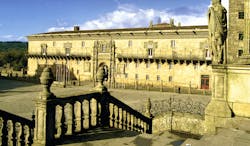
Parador de Santiago de Compostela is a 5-star deluxe, historic hotel in an excellent location. Grand architecture and interiors and a restaurant serving authentic gourmet cuisine ensure that guests experience local culture and heritage.
Standard room
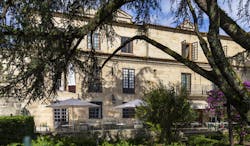
The Parador de Pontevedra, located in the old quarter of Pontevedra, provides a great base for exploring the city’s historic treasures as well as the surrounding coves and beaches which offer delicious seafood and wine.
Standard room
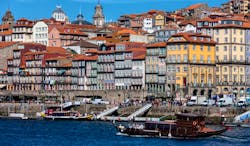
Pestana Vintage Porto is a 5-star luxury hotel and UNESCO World Heritage Site, overlooking the river Douro. The hotel’s modern, elegant interior and welcoming comforts make it an ideal base from which to explore Portugal’s second largest city.
Classic room
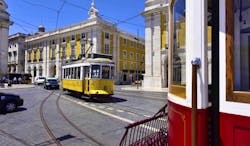
Pousada de Lisboa is a luxury hotel with a rich history and is located on one of Lisbon’s most vibrant and popular plazas, the Praça do Comércio.
Classic room
It has been a lovely holiday & once again, you did not disappoint. Thank you again for everything. We look forward to contacting you again for our next adventure.Mrs H, July 2025
Holiday price guide Prices from £1,970 per person based on two people sharing a double or twin room.
Holiday Code POBR01
Call us on 01392 441245
Luxury touring holiday by train from Galicia to Lisbon including Santiago de Compostela, Porto and Coimbra
About Portugal
An Expressions tailor-made holiday to Portugal's countryside bursts with pretty villages, glitters with historical treasures and World Heritage sites, as well as converted mediaeval monasteries, and elegant manor houses now hosting some of the finest hotels in Europe. Though Portugal's spirit is undoubtedly rural, its big towns Porto and Lisbon are lively, magical places making full use of their waterside setting, offering rich picking for those that like to wander, with colourful waterside cafes and boutiques, leafy boulevards and old-fashioned trams still rattling through the streets. Smaller towns offer their own enchantment, with well-preserved medieval quarters that invite exploring in towns like Évora, Coimbra, Guimarães and Braga. Outside the cities, travellers can enjoy Portugal's warm sunny weather, exploring centuries-old vineyards, visiting stone villages in the mountains or soaking up rays on the magnificent southern shoreline. Dramatic scenery lies all along the coast from windswept cliffs with edge-of-the-world views to wild dune-covered beaches. More than just a static backdrop, the scenery sets the stage for outdoor adventure. Hiking, surfing, windsurfing, horse-riding, big game fishing, kayaking, diving, golfing, and mountain biking are a few ways to spend a sun-drenched afternoon. 600 miles southwest of Portugal lies the island of Madeira, home to Reid's Palace Hotel, an elegant and glamorous five star hotel in a superb location, ideal for holidays all year round, due to the mild winter climate, and on an island renowned for its beautiful vegetation.
Highlights of Lisbon
The area close to the city of Lisbon is known for its variety of attractions. Moorish architecture left over from Arabic rule can be seen in the Castelo de Sao Jorge in the Alfama. Collections of Portuguese art are on display in the Museu Gulbenkian, the Museu de Arte Antiga, and the Berardo Collection. For a taste of Portugal's maritime history, visit the Monasteiro dos Jeronimos. Sintra, the favourite haunt of Lord Byron, is home to twin-peak-top castles and royal palaces. Beautiful, golden sandy beaches can be found in Cascais to the west of Lisbon, or on the Costa da Caparica to the south; particularly idyllic are the coves between Setubal and Sesimbra. Peniche is a picturesque seaside town renowned for being one of Europe's best surfing spots. You can explore all that the area around the city of Lisbon has to offer with our Tour of the City and Countryside of the Lisboa Region.
Highlights of the Algarve
Known for having some of Portugal's most scenic beaches, the Algarve is a popular destination for those looking for a beach or water sports holiday enjoying the Portuguese sunshine. Sagres and Tavira are recognised as the best places for this. In Albufeira, Armacao de Pera, and Lagos you will find an abundance of the light-catching rocky outcrops and peaceful coves that the Algarve is so well known for. Salema, Burgau, and Sagres were once busy little fishing villages, and now still stand as testament to this important aspect of Portuguese culture. The Reserva Natural da Ria Formosa lies just off the southern coastline, the islands of which can be accessed from many towns, including Faro, Olhao, Fuseta, Cabanas, and Tavira; most of which are also ideal starting points from which to try a little surfing. White-washed and serene Alcoutim is an example of the less-developed Portuguese towns, with a hint of Andalucia in its appearance, and Loule is the perfect place to wander around a bustling market. You may also wish to visit the Roman ruins at Milreu, the Moorish town of Silves, or the Spa town of Caldas de Monchique. For outdoor pursuits, head into the Serra de Monchique Mountain Range.
Highlights of Porto and the Douro Valley
At the mouth of the Rio Douro lies Porto, an atmospheric town with a dramatic aspect and almost Parisian lifestyle. Its streets are lined with historic buildings and wine lodges serving the best of Portuguese wines. The nearby wine towns of Penafiel, Peso da Regua, Pinhao, and Amarante are also recommended for wine-tasting, but have a much more rural location. Amarante, in particular, is believed to be the most attractive wine town in the area, with a central triple-arched bridge, tall stone red-roofed houses interspersed with verdant trees, and a gently flowing river. To witness a sample of Portuguese Baroque architecture, visit the pilgrimage town of Lamego. The main attraction of this town, the Sanctuary of Our Lady of Remedios, lies at the top of an elaborate and intricately decorated set of zig-zagged stairways that pass through archways and across viewing balconies. In Porto, some of the greatest artistic triumphs of 17th century Portugal reside, the Se Cathedral in particular, in which every inch of the columns, archways, and altar have been adorned in golden floral and religious motifs, in true Baroque style. For something even more historic, visit the Palaeolithic rock formations of Vila Nova de Foz Coa, the largest outdoor gallery of stone age remains in the world, which have since been neighboured by flourishing vineyards. Along the rocky gorges of the river, you will find a number of castle-towns, including the Medieval walled town of Trancoso and the fortress town of Almeida.
Highlights of Madeira
A green and fertile island in the Atlantic Ocean, Madeira is situated off the coast of Morocco. Its coastline combines beautiful sandy beaches with rocky cliffs, the latter of which can be best appreciated at Cabo Girao. The island's capital, Funchal, is packed full with historic buildings, including 15th century churches and convents and a Se Cathedral as ornate as the one in Porto. Enjoy the relentless joviality of the street markets, or visit more peaceful attractions, such as the basalt cave of Capela de Sao Vicente or the island's protected nature reserves. Rare Laurissilva forests can be walked, trekked, or hiked through, affording guests sensational views; and the crystal clear waters off the coast can be swam through, perhaps below the water's surface so the ecosystems that live in the reefs can be appreciated. One of the greatest pleasures of Madeira, however, is wandering over the beaches, surveying the rock pools, and taking in the sights from the clifftops. Aside from the key regions that our Portuguese programme focuses on, there is much to find and see in Portugal. Those willing to drive a little further during the day will enjoy a much more diverse touring holiday.
Facts in brief
Capital LisbonAirport There are international airports at Lisbon, Porto and Faro, served by a variety of airlines from the UK, including British Airways, EasyJet, bmibaby, TAP, Jet2.
Size 35,000 sq. miles
Population 10 million
Call us on 01392 441245
Luxury touring holiday by train from Galicia to Lisbon including Santiago de Compostela, Porto and Coimbra
About Green Spain
Green Spain features some of the best four and five star hotels in the regions of Galicia, Asturias and Cantabria in northern Spain, including coastal properties, city hotels and rural retreats. From the pretty rivers on the west coast of Galicia to the spectacular mountains of Asturias and the prehistoric caves of Cantabria, Green Spain is a picturesque area in the north of Spain. With quiet sandy beaches, green landscapes, charming villages and Romanesque architecture lining the famed pilgrimage route which leads to Santiago de Compostela, there is plenty to discover. Although many of those who go on holiday to northern Spain simply pass through en route to Santiago de Compostela, the entire region has much to offer. Stunning beaches are almost untouched, whilst the mild climate has produced rich vegetation which covers unspoilt countryside. Both along the coast and further inland there are attractive cities, towns and villages with a wealth of historical, architectural and cultural sights to discover. Galicia and Asturias have strong cultural identities, both fiercely defending their Celtic traditions which include playing bagpipes, and even speaking their own languages. In the far west is the remote region of Galicia, known as ‘The land of a thousand rivers’ thanks to the numerous wide inlets that run into the sea. The Atlantic coastline is rugged, with rocky headlands, idyllic beaches and isolated fishing villages, whilst the interior is hilly and overwhelmingly green. To the east is the Principality of Asturias, an enchanting region of contrasts with secluded beaches as well as peaceful countryside. Forming a natural barrier in the south are the towering Picos de Europa mountains, a spectacular area with small mountain villages, lush pastures, emerald forests, sheer gorges and glittering lakes. Next is the small, mountainous region of Cantabria, where white sand beaches line the coastline facing the Bay of Biscay, separated by rugged headlands.
Highlights of Green Spain
Santiago de Compostela cathedral, the supposed resting place of St James the Apostle, from whose rooftop you can enjoy unforgettable views over the old town. The attractive Galician cities of Ourense, Pontevedra and Lugo, all with historical sites including Roman architecture. Maritime cities along the Atlantic coastline including A Coruna, Ferrol, Vigo, and Baiona. The Tower of Hercules, an ancient Roman lighthouse near A Coruna. Galicia's fjord-like inlets known as the Rías Altas (along the north-west coast) and the Rías Baixas (along the southwestern coast). The dramatic Cape Finisterre, so called because it was thought to be the westernmost point in Europe. The stunning Picos de Europa mountains, home to a diverse range of walking trails and the atmospheric Covadonga Sanctuary. Oviedo, the attractive capital of Asturias which is home to some remarkable pre-Romanesque churches. Altamira Caves, a UNESCO World Heritage Site with ancient rock paintings which are up to 20000 years old. Comillas, a beachside town with impressive architecture including a building designed by Antonio Gaudí. Pleasant towns along the shores of the Cantabrian Sea including Gijón and Llanes. Santillana del Mar, a picturesque village inland with a number of well-preserved mediaeval buildings. Santander, a lively port city with a historic quarter, a modern centre and the famous El Sardinero beach.
Festivals in Green Spain
February/March: Carnivals celebrating Lent, March: Vigo Reconquest Festival; March/April: Holy week celebrations, July: ‘A Rapa das Bestas’ horse festival held in Galician villages, July: Saint James the Apostle festival in Santiago de Compostela, July: Nava Cider Festival (near Oviedo), August: Festival of San Roque in Betanzos (near A Coruna), August: Santander International Festival.
Gastronomy in Green Spain
Cuisine in the north of Spain tends to be simple and hearty, making good use of the excellent local produce including abundant fish and seafood, plentiful meat and game and a great variety of vegetables. The regions produce a range of dairy products, from the mild soft cheeses of Galicia to the smoked cheese of Cantabria and the blue cheeses of Asturias. Asturias is known for its dry cider, whilst Galicia produces high quality wines, both crisp whites and fruity reds, as well as a strong liqueur, ‘Orujo.’ Local dishes include ‘Vieras de Santiago’ (Scallops, the symbol of St James, which are baked in their shells), ‘Empanada gallega’ (a Galician meat pasty), ‘Lacón con grelos’ (pork shoulder with chorizo, turnips and potatoes), ‘Caldo gallego’ (thick soup with meat, potatoes and beans), ‘Fabada’ (an Asturian stew with pork and beans), ‘Tarta de Santiago’ (an almond cake), ‘La quesada’ (a Cantabrian cheesecake) and ‘Sobaos Pasiegos’ (Cantabrian sponge cakes).
Climate in Green Spain
Green Spain has a wet and mild climate with warm summers and cool winters. Summer is a popular time to visit northern Spain as the weather is sunny yet comfortable, but you can expect good weather in Spring and Autumn as well. Rain falls throughout the year although there is little during the summer months. Temperatures are rarely extreme, although mountainous areas can be very cold in winter with snow falling.

